Growing Lemon Trees: Choose A Greenhouse Or Conservatory For Regular Fruit

TREES > LEMON
Chris is a gardening writer and nature enthusiast. He graduated from Oxford Brookes University in 2022 with an MA in Psychology. Chris works with the Leeds Green Action Society, helping their food cooperative by growing various fruit and vegetables on their two allotments in Hyde Park, Leeds.
Reviewed By COLIN SKELLY

Colin is a Horticulturist and Horticultural Consultant with experience in a range of practical and managerial roles across heritage, commercial and public horticulture. He holds the Royal Horticultural Society’s Master of Horticulture award and has a particular interest in horticultural ecology and naturalistic planting for habitat and climate resilience.
Contributions From THE 3 GROWBAGS

What started as a blog turned into a huge project and an online shop for sisters Elaine, Caroline and Laura, who make up The 3 Growbags. They frequently document their journey and have made appearances at several RHS shows. All three are full members of the Garden Media Guild.
IN THIS GUIDE
LEMON GUIDES
If life gives you lemons, you make lemonade – everyone knows that.
But what if life hasn’t given you lemons?
In this instance, you have to take it upon yourself to grow your own lemons.
This way you’ll have a steady supply of the tangy citrus fruit we all love so much – yours to do whatever you want with, lemonade or not.
Overview
| Botanical Name | Citrus x limon |
| Common Name(s) | Lemon Tree |
| Plant Type | Tree |
| Native Area | South Asia |
| Hardiness Rating | H2 |
| Foliage | Evergreen |
| Flowers | White or pink-tinged blossom |
| When To Sow | Year-Round (move outside in June; bring indoors in September) |
| Flowering Months | Year-Round |
| When To Prune | February, June, July, August |
Sunlight
Preferred
Full Sun
Exposure
Sheltered
Size
Height
4 – 8M
Spread
1.5 – 2.5M
Bloom Time
Spring – Autumn
Soil
Preferred
Clay, loam, sand
Moisture
Moist but well drained
pH
Acidic / Neutral
The word ‘lemon’ refers to the familiar yellow fruit, and to the small evergreen tree that gives rise to it.
Both are native to India and other parts of South Asia but have since journeyed around the world to be commonplace almost everywhere.1Lemon. (n.d.). New Crop Resource Online Program. Retrieved March 21, 2023, from https://hort.purdue.edu/newcrop/morton/lemon.html#Description
This tree grows well in the UK despite its warmer origins, and is a popular choice for British gardeners looking to bring an exotic feel into their home or garden.
Why Grow Lemons?
Admittedly, a lemon tree probably isn’t on the top of your list of characteristically British plants. And that’s OK.
Part of the fun of gardening is trying new things, exploring different influences, and creating exciting combinations.
“One of my favourite plants would have to be my lemon tree,” says Laura from The 3 Growbags.
“It flowers and fruits all year round, the flowers smell gorgeous, as do the crushed leaves, and a freshly picked lemon is just one of life’s perfect things.”

A lemon tree framed by some typically British plants like hydrangeas, honeysuckle, or forget-me-not creates an interesting and rewarding aesthetic.
And not only that: the fruit you’ll harvest from your lemon tree is almost reason enough to grow one. Lemons are delicious.
While very few people can tolerate lemon by itself, the juice, flesh, and zest feature in thousands of recipes from around the globe, including sweet and savoury.
Growing a lemon tree guarantees you easy access to the culinary delights offered by this citrus superhero.
How To Grow A Lemon Tree
Right, let’s get down to the practicalities of growing a lemon tree in your garden.
This section will explore the wheres, whens, and hows of lemons.
Outdoors Growing
This type of tree is more sensitive to cold than other fruit trees, and to other citrus trees.
In fact, growing outside in the UK is generally not recommended unless you’re able to ensure that your plant won’t be subjected to frost – a tough ask in most regions!

For that reason, most people that grow lemon trees outdoors tend to overwinter them in either a greenhouse or conservatory.
Choosing a south-facing aspect best positions the tree to enjoy sunlight and the warmer temperatures that accompany it.
Lemon trees aren’t fussy with soil type, but will appreciate a position with good drainage.
Mildly acidic soil is best, but it’s not a disaster if you plant your tree in a spot with different pH levels.
Indoors Growing
With an expected height of around 1.5m, these trees are definitely a viable size to grow indoors.

Growing indoors gives you more control over the soil as well, meaning you can provide your lemon tree with the perfect conditions.
To recap: that’s moist, well-drained, slightly acidic soil. A temperature range of 13-21°C is optimal.
Indoors, it’s easy enough to rig up some specialised growing lamps to supplement the natural light they receive over winter.
Pollination
If you’re growing outdoors, bees and other pollinators will take on the task of pollinating your lemon tree.
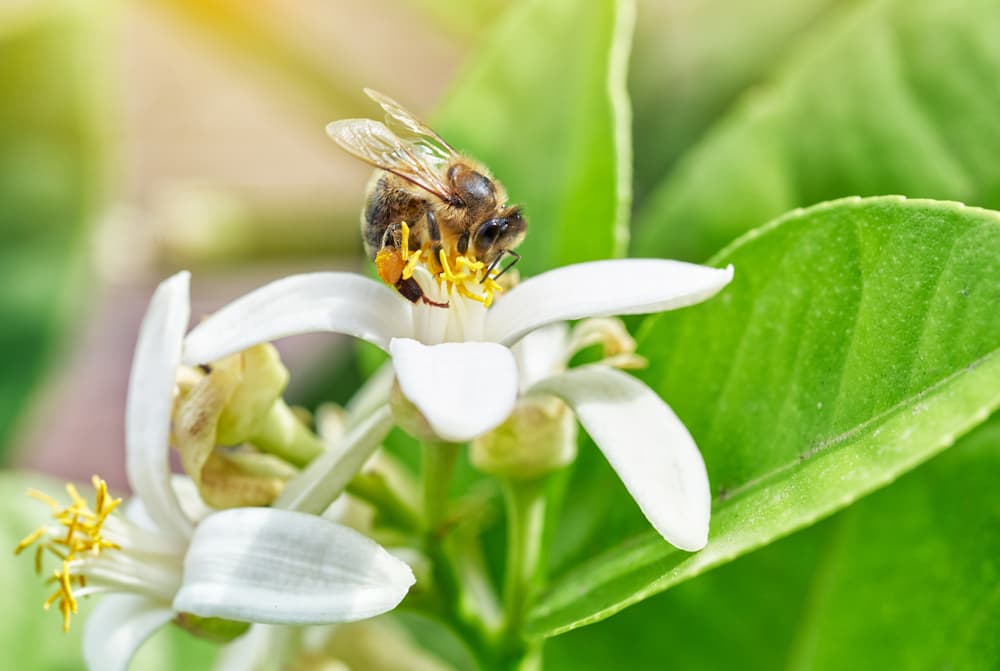
Grow indoors, however, and you either need to pollinate yourself (fiddly: not typically recommended!) or move your plant outside for a spell during summer.
Pollination is a vital part of the fruiting process, so if you’re aiming for a big citrus bounty, make sure to factor this in.
Planting
Our recommendation would be to buy and grow an established lemon tree, as this gives you all the benefits without the need to grow from seed, which can be fiddly.
Lemon trees from seed also take over a decade to start fruiting – so prepare yourself for the long haul!
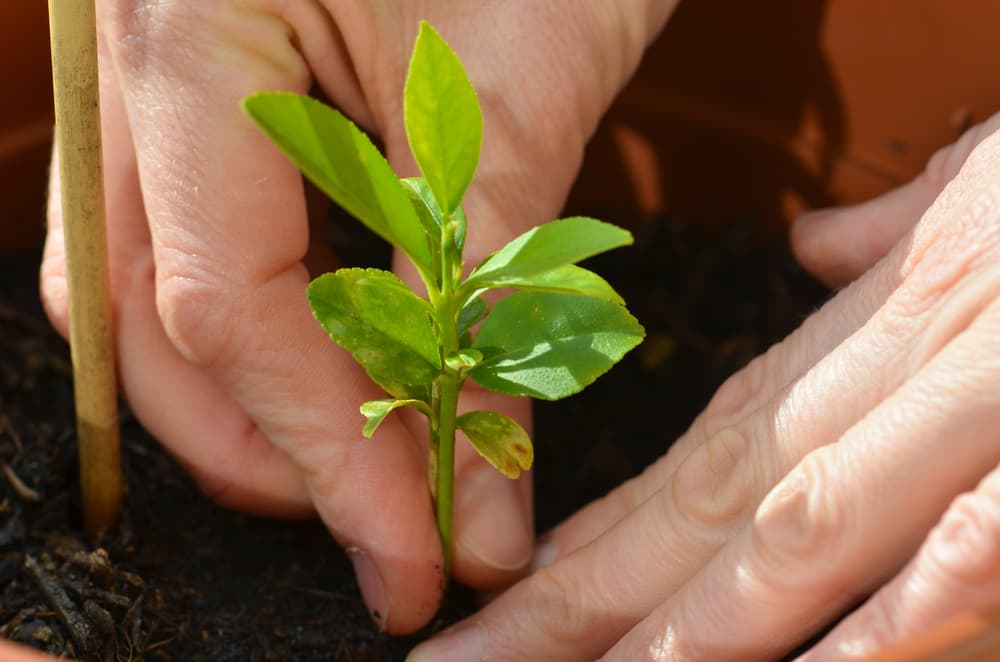
If you opt for an already-established plant, you can buy them in containers from garden centres and other plant shops, and it’s just a case of transplanting into your garden or moving the pot into your house.
Growing From Seed
If you decide to grow a lemon tree from seed, however, here’s how to do it –
- Allow the seeds to dry for a couple of weeks.
- Plant into potting soil to a depth of 2-3cm.
- Use cling film or a similar transparent plastic to cover the pot: This seals the heat in.
- Place the pot in a spot with plenty of sunlight. Wait until there’s at least 15-30cm of growth before planting out.
After reading this section, maybe you’re wondering whether you can grow a lemon tree from a seed taken directly from a lemon? The answer is yes!
You’ll want to find a plump, tasty lemon.
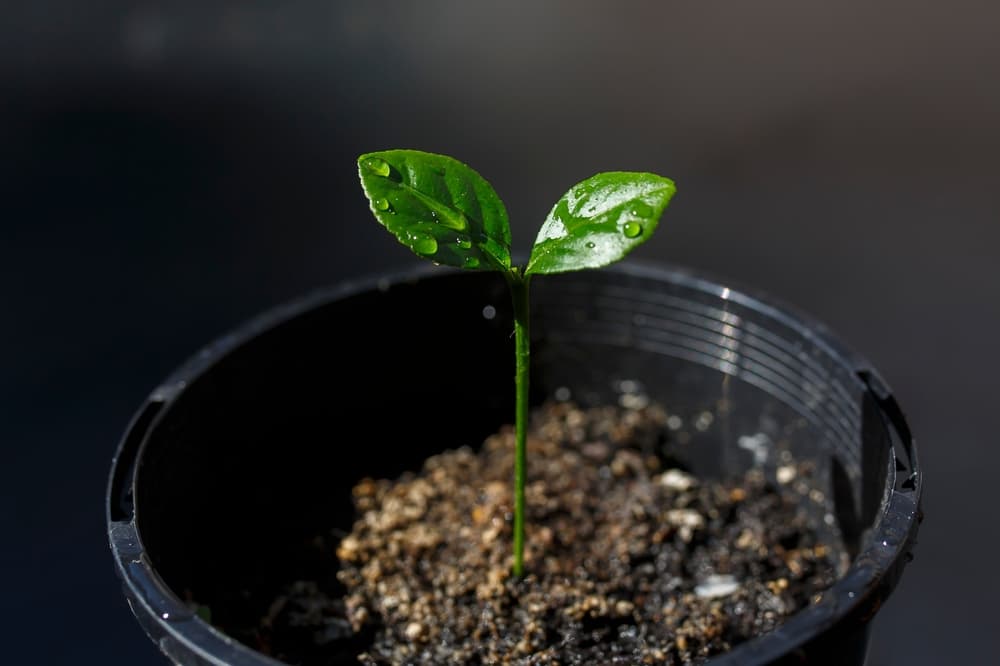
Remove and thoroughly wash the seeds, making sure to dislodge all flesh: the sugar inside can cause damage to your seed by providing ideal conditions for fungal growth.
While the first step with bought seeds is to dry them out, seeds taken directly from a lemon should be planted straight away to best facilitate growth.
Lemon Tree Care
Once your seeds are planted, you’ll want to keep them in ideal conditions to maximise the chance of germination. Here’s how to do that –
- Aim for four hours or more of direct sunlight every day.
- Aim for temperatures of 15-21°C.
You should see growth within a few days to a week.
If not, this may mean that your seeds haven’t germinated, and that you might need to try again.

Once you see growth, remove the plastic cover and move to a position with more light, if possible.
Once they begin to establish, you can move your lemon sapling to larger pots containing potting medium.
Fertilising with high-potassium fertiliser every few weeks will provide your lemon tree with optimal nutrition and stimulate healthy growth.
Transplanting
Lemon trees should be planted slightly higher than the surrounding soil, so dig a hole that’s a little less deep than the root ball.
Place the lemon tree in the hole, cover over, then water lightly and leave to establish.

If leaving outside over winter (not recommended) be vigilant and cover the base of your lemon tree with fleece or other similar garden material on particularly cold nights.
While lemon can tolerate UK weather, extreme cold will cause damage, and maybe even kill it. So keep a lookout!
Feeding
This citrus is a ‘fussy eater’, requiring regular nitrogen compost from late spring to early autumn, and winter feed tailored specially to citrus.
“Typically, citrus feed is sold as two distinct products, usually as a powder to be mixed in a watering can,” shares Horticultural Consultant Colin Skelly.
“There is a feed for autumn and winter and one for spring and summer with different balances of nutrients.
“Follow the instructions for amounts and dilutions, as you can easily cause more harm than good with too much.”
Ask at your local garden centre if you’re unsure which type to use – they’ll be able to point you in the direction of the ones most beneficial to your plant.
Pruning
Citrus trees generally don’t need much pruning, but your lemon tree will benefit from a little TLC.
You can prune back crowded branches with secateurs, or pinch the end of particularly enthusiastic branches to slow them down.
Harvesting
Once your tree is mature it will start to fruit.
Lemon boasts a long harvest season as well, with fruit available between July and April.
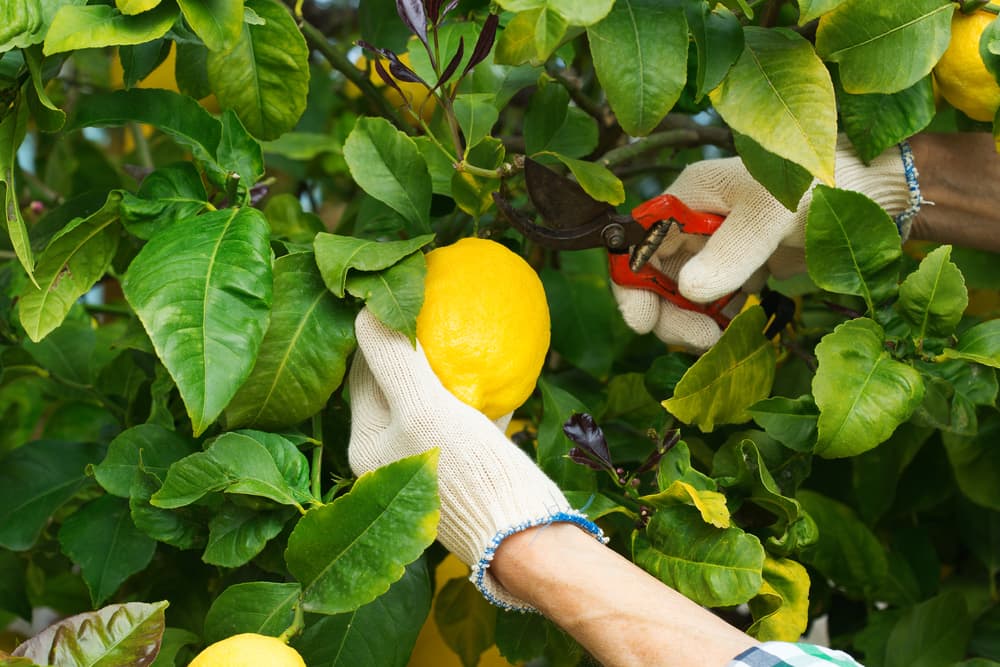
With such a long harvest period it’s often best to only pick lemons as and when you need them, as they’ll remain healthy and fresh if kept on the tree.
Common Problems
We’ve already written about insulating the base of your lemon tree during cold snaps, as extreme cold can damage or kill the plant.
You also need to water carefully, as over-watering is a frequent cause of issues for lemon trees.
Make sure water can drain away, and that the plant is in a position which allows excess water on leaves to evaporate away.
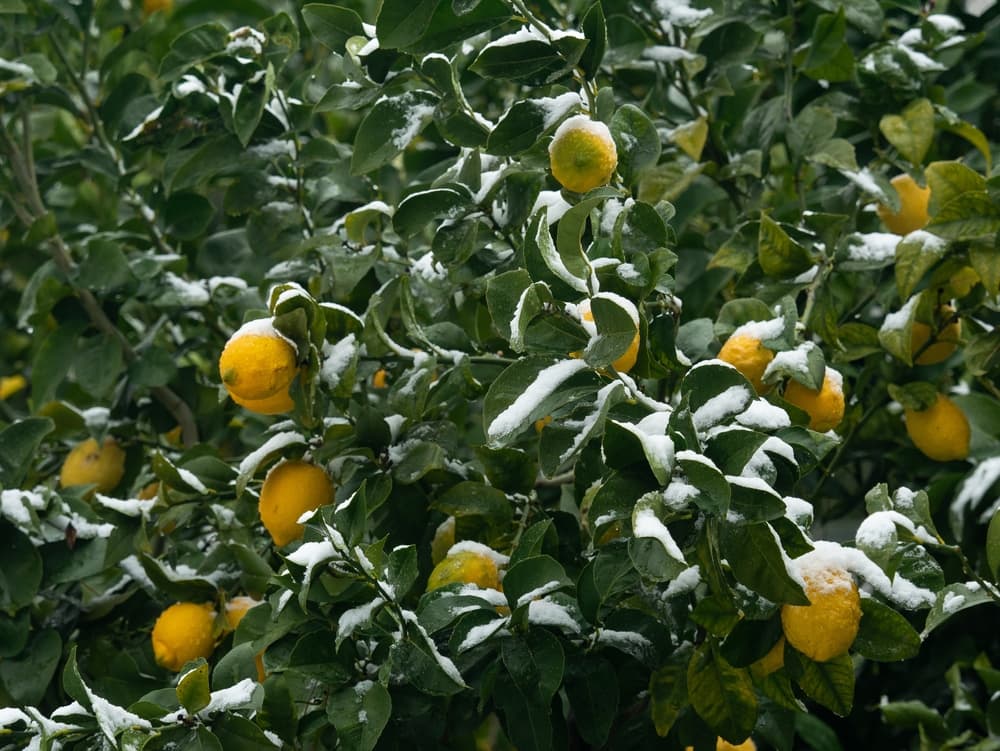
Lemon is generally easy to grow, making it a great all-rounder for budding British gardeners.
Whether you grow indoors or outdoors, from seed or from a container, a lemon tree will make a fine addition to your garden credentials.
References
- 1Lemon. (n.d.). New Crop Resource Online Program. Retrieved March 21, 2023, from https://hort.purdue.edu/newcrop/morton/lemon.html#Description
